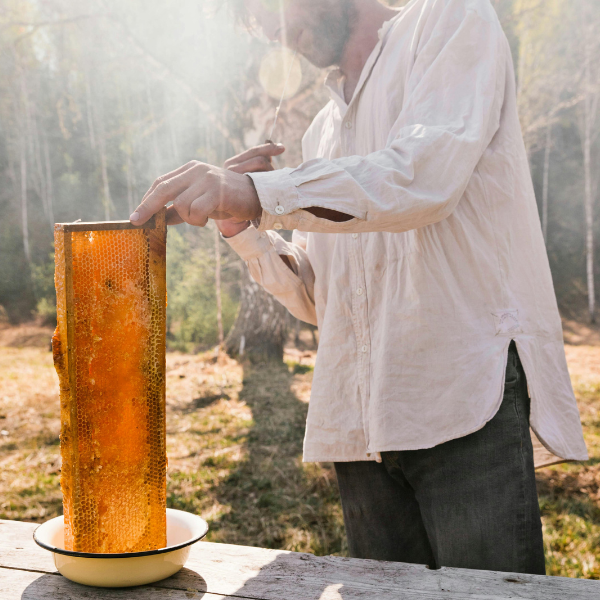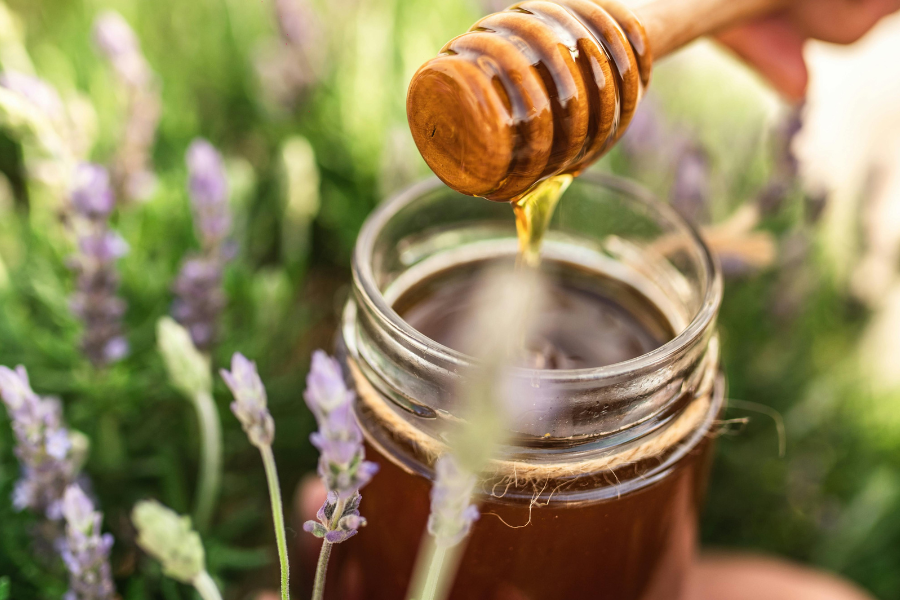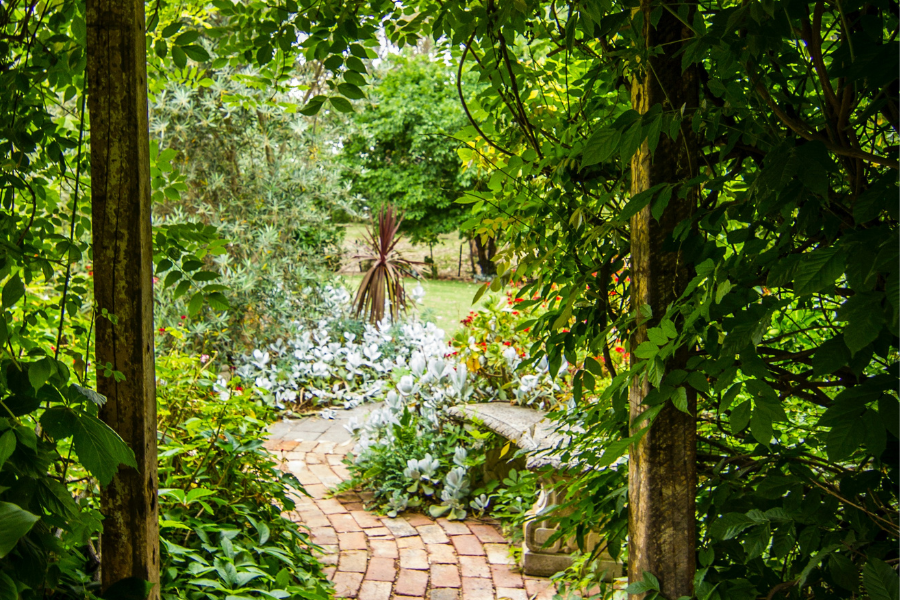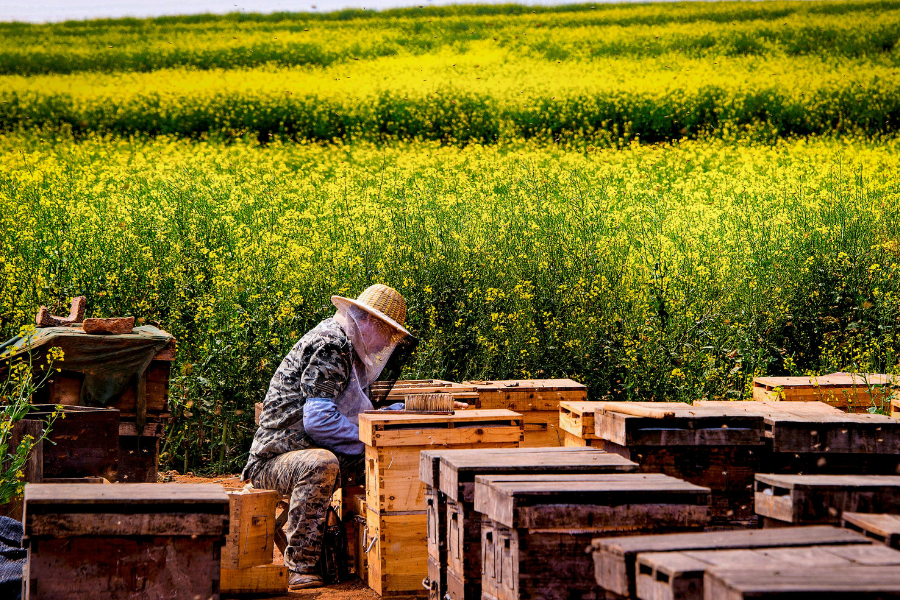Table of Contents
1. Understanding Pollinators and Their Importance
What Are Pollinators?
Supporting local pollinators is vital for maintaining biodiversity and ensuring the health of ecosystems. Pollinators are essential organisms like bees, butterflies, bats, and birds that transfer pollen from one flower to another, enabling plants to reproduce. This process is crucial for about 75% of flowering plants, including many crops we rely on for food.
Pollinators like honeybees and native pollinators play a significant role in sustaining biodiversity and ecosystem balance. By fostering healthy local populations of these pollinators, we support local pollinators and ensure the continuation of these indispensable ecological functions.
The Role of Native Plants Pollinators
Native pollinators are perfectly adapted to their local ecosystems, making sure that the plants in your area get pollinated efficiently. Native plants and pollinators often have a special relationship, benefiting each other in a way that keeps everything in balance. When both native plants and pollinators are thriving, it strengthens biodiversity and boosts the resilience of the ecosystem as a whole.
2. Plant Native Pollinator-Friendly Plants
Planting for pollinators is one of the most impactful ways to support local pollinators. Native pollinator plants provide the nectar and pollen that pollinators like native bees and butterflies need.
- Choose Native Species: Plants native to your region, such as echinacea, goldenrod, and wild indigo, are the best choice. Native shrubs for pollinators like elderberry, lilac, and dogwood provide seasonal food sources.
- Include Pollinator Flowers: Incorporating pollinator flowers that bloom at different times of the year ensures a continuous food supply. A mix of perennial and annual native plants for pollinators, such as milkweed or coneflower, can encourage both short- and long-term pollinator activity.
- Consider Evergreen Pollinator Plants: Certain evergreen pollinator plants, such as holly, provide year-round food sources for pollinators, ensuring they remain active even in colder months.
3. Provide Nesting Habitats for Pollinators
Pollinators need more than just food sources. Native plants for pollinators are essential, but so are the places where they can live and reproduce.
- Leave Dead Wood: Dead trees or fallen branches are great homes for solitary bees and beetles. Deadwood provides nesting spots for these vital insects, helping sustain native pollinators.
- Create Bee Hotels: Solitary bees, such as mason bees, need safe places to lay their eggs. Installing a bee hotel can help support these crucial pollinators.

Reduce Pesticide Use
Excessive pesticide use can harm pollinators by poisoning them or destroying their habitats. Choose organic methods and natural pest control options to keep pollinators safe while maintaining plant health.
- Apply Pesticides Responsibly: If necessary, apply pesticides during times when pollinators are not active (e.g., early morning or late evening) to minimize harm.
- Choose Pollinator-Friendly Pesticides: Opt for products that are labeled as safe for bees and other pollinators.
4. Provide Water Sources for Pollinators
Pollinators need access to clean water to stay hydrated. By providing water sources in your garden, you can support both bees and butterflies.
- Install Shallow Water Dishes: Shallow dishes with stones for resting places are perfect for pollinators. Bees, butterflies, and even hummingbirds need water to survive.
- Maintain Clean Water Sources: Regularly clean water sources to prevent the spread of diseases that could harm local pollinators.
5. Support Local Beekeepers and Pollinator-Friendly Policies
Beekeepers, especially those working with native pollinators, play a vital role in supporting pollinator populations.
- Buy Local Honey: Support local honey producers and sustainable practices. These beekeepers help maintain populations of honey bees, which also pollinate many crops.
- Advocate for Pollinator-Friendly Policies: Engage with local lawmakers to advocate for policies that protect native pollinator habitats and encourage the planting of pollinator plants.
How to Support and Attract Local Pollinators
- Plant Pollinator-Friendly Plants: Choose native flowers, shrubs, and trees that provide nectar and pollen for bees, butterflies, and birds.
- Avoid Harmful Pesticides: Reduce or eliminate pesticide use to protect pollinators from harmful chemicals.
- Create Safe Nesting Spaces: Leave dead wood, plant pollinator-friendly shrubs, and install bee hotels to provide shelter for pollinators.
- Support Local Beekeepers: Buy honey from local beekeepers to support sustainable beekeeping practices and healthy bee populations.
- Encourage a Diverse Plant Landscape: Ensure a variety of plants bloom throughout the year to provide continuous food sources for pollinators.
- Provide Water Sources: Place shallow dishes with stones for pollinators to safely access water.
- Advocate for Pollinator-Friendly Policies: Support local policies that promote the protection of pollinators and their habitats.
- Understand the Role of Bees: Bees are some of the most effective pollinators, visiting multiple flowers to transfer pollen efficiently.
- Promote Pollinator Conservation: Engage in actions that help save insect pollinators, such as reducing habitat destruction and promoting ecological balance.
By taking these simple actions, you can make a big difference in supporting local pollinators and helping them thrive in your area.

6. Supporting Pollinators with Habitat Restoration
Rewild Your Garden: Bring in a variety of native plants like wildflowers, grasses, and trees to create a space that’s welcoming to pollinators.
Replace Non-Native Plants: Swap out ornamental, non-native plants for native pollinator-friendly options. This ensures a steady food supply for the local pollinators all year round.
Create Wild Spaces: Let some areas of your garden grow freely with tall grasses and wildflowers. These wild spaces provide much-needed shelter and nesting spots for pollinators.
Enhance Soil Health: Native plants improve soil quality, creating a healthier environment for both the plants and the pollinators that rely on them.
Creating Pollinator Corridors to Boost Populations
Create Pollinator Pathways: Set up networks of pollinator-friendly plants that link urban and rural areas, making it easier for pollinators to move between different habitats safely.
Make the Most of Small Spaces: Even in cities, you can plant pollinator-friendly flowers along roadsides, in parks, and in community gardens, giving pollinators essential routes for travel.
Provide Continuous Resources: Pollinator corridors ensure a steady supply of food, water, and nesting spots, helping pollinators thrive and migrate smoothly.
Work with Your Neighbors: Collaborate with your local community to create connected pollinator-friendly areas, forming larger and more sustainable habitats where pollinators can thrive.
Advocating for Pollinator-Supportive Legislation
Push for Native Plant Policies: Advocate for laws that make public spaces bloom with native plants, giving pollinators the food and shelter they need to thrive.
Limit Harmful Pesticides: Support policies that reduce harmful pesticide use and encourage safer, bee-friendly alternatives to protect our pollinators.
Promote Green Spaces: Stand up for the creation and preservation of parks, community gardens, and natural areas—places that offer pollinators much-needed homes and resources.
Encourage Sustainable Farming: Push for policies that motivate farmers to adopt practices that help pollinators, like planting wildflowers and cutting down on pesticide use.
Innovative Pollinator-Friendly Landscaping
Create Multi-Functional Gardens: Design gardens that mix edible plants, like fruit trees and herbs, with pollinator-friendly flowers. This combination brings beauty and sustainability to your space.
Use Native Grass Meadows: Plant drought-tolerant, low-maintenance grass meadows that provide shelter for pollinators while reducing the need for watering and chemicals.
Extend the Blooming Season: Choose plants that bloom at different times of the year to make sure there’s always nectar available for pollinators.
Add Water Features: Consider adding a small pond or shallow water dishes to offer pollinators and other wildlife a much-needed source of water.
Diversify Habitats: Incorporate elements like logs, rocks, or brush piles in your garden to create shelter for pollinators like bees and butterflies.
7. Leveraging Technology to Support Pollinators
- Smart Gardens with Monitoring Systems: Use sensors to track soil conditions, humidity, and plant health, ensuring optimal conditions for pollinators and providing real-time data on garden vitality.
- Drones and Cameras for Pollinator Tracking: Utilize drone technology to monitor pollinator behavior, migration patterns, and plant-pollinator interactions, offering valuable insights into how your garden can be improved.
- Pollinator Health Data Analysis: Leverage data from pollinator tracking devices and smart gardens to identify which plants attract the most pollinators and adjust garden practices accordingly.
- Automated Watering Systems for Pollinator Gardens: Integrate automated irrigation systems with moisture sensors to maintain an ideal watering schedule, conserving water while sustaining pollinator-friendly plants.
- Pollinator Apps for Education and Engagement: Use apps that help gardeners identify native pollinator species, monitor plant growth, and learn about new pollinator-friendly practices.

8. Educational Outreach and Community Engagement
- Host Pollinator-Themed Workshops: Organize community workshops or webinars that teach the importance of pollinators, how to plant native pollinator species, and how to monitor their health.
- Pollinator Education Programs in Schools: Introduce school programs or field trips centered around pollinator conservation, encouraging children to learn about pollination and native plants.
- Create Pollinator Conservation Events: Hold “planting for pollinators” events where community members gather to plant native species together, expanding pollinator habitats.
- Collaborate with Local Farmers: Encourage local farmers to participate in community-wide pollinator conservation efforts by planting wildflower strips along crop fields or reducing pesticide use.
- Establish Pollinator-Friendly Community Gardens: Create community gardens dedicated to native pollinator plants, allowing neighbors to collectively care for and monitor the health of pollinators.
9. Creative and Sustainable Approaches to Supporting Pollinators
- Create Living Fences: Plant native hedgerows that provide both shelter and food sources, such as berries and nectar-rich flowers.
- Integrate Solar-Powered Water Stations: Install solar-powered watering systems to offer sustainable water sources for pollinators while reducing energy consumption.
- Establish No-Mow Zones: Set up areas in lawns or public spaces to grow wildflowers and grasses, creating essential habitat for ground-nesting pollinators.
- Partner with Local Businesses: Collaborate with businesses to sponsor pollinator-friendly initiatives, enhancing pollinator conservation efforts on a larger scale.
10. Unique and Scalable Solutions for Pollinator Conservation
- Insect Hotels: Create nesting sites for solitary bees and other pollinators by incorporating insect hotels in gardens or public spaces.
- Rain Gardens: Install rain gardens that capture stormwater while supporting native plants that attract pollinators.
- Vacant Lot Transformations: Convert vacant lots into pollinator sanctuaries to create large-scale habitats for local pollinators.
- Regenerative Farming Practices: Encourage local farmers to adopt agroforestry and other regenerative practices to provide diverse food and shelter for pollinators.
Frequently Asked Questions
1. What Are Pollinators?
Pollinators are organisms that move pollen from one plant to another, facilitating fertilization and the growth of fruits and seeds. Examples include bees, butterflies, bats, and birds.
2. Why Are Native Pollinators Important?
Native pollinators have evolved alongside local plants, making them more efficient at pollination. They are key to supporting healthy ecosystems and maintaining biodiversity.
3. How Can I Create a Pollinator-Friendly Garden?
Plant native species, provide nesting habitats, reduce pesticide use, and offer clean water sources. Native pollinator shrubs like lilacs, serviceberry, and sumac are great for attracting native pollinators.
4. What Are Some Examples of Native Pollinator Plants?
Examples include native shrubs for pollinators like sumac, serviceberry, viburnum, and honeysuckle, as well as perennial flowers such as coneflower, milkweed, and asters.
5. How Can I Support Local Beekeepers?
Buy honey from local beekeepers, support sustainable beekeeping practices, and advocate for policies that protect pollinators.
6. What Pollinators Are Native to North America?
Native pollinators in North America include honeybees, bumblebees, mason bees, and butterflies such as the monarch butterfly. Native plants for pollinators are often specifically adapted to these species.
7. How Does Leaving Leaves in My Yard Benefit Pollinators?
Leaf litter provides shelter for pollinators, particularly for overwintering solitary bees. It also enriches soil health, which supports plant life that attracts more pollinators.
8. What Are Some Shrubs That Attract Bees?
Shrubs like lilac, elderberry, and lavender are not only beautiful but also provide essential nectar and pollen for bees.
9. Why Is Supporting Local Pollinators Important?
Local pollinators are integral to maintaining biodiversity, ensuring food security, and supporting healthy ecosystems. By supporting native pollinators, we help create a balanced environment where all species thrive.
With these tips, you can contribute to the health of local pollinators and, in turn, the health of the ecosystem around you. By promoting pollinator-friendly practices, you create a lasting impact on biodiversity for future generations.






На этом сайте вы сможете найти свежие новости Краснодара.
Здесь собраны главные новости города, репортажи и оперативная информация.
Будьте в курсе городских новостей и получайте информацию из первых рук.
Если хотите знать, что происходит в Краснодаре, читайте наш сайт регулярно!
https://rftimes.ru/
На этом сайте можно найти последние новости Краснодара.
Здесь собраны актуальные события города, обзоры и оперативная информация.
Следите за развития событий и читайте только проверенные данные.
Если вам интересно, что происходит в Краснодаре, читайте наш сайт регулярно!
https://rftimes.ru/
На данном сайте можно найти свежие новости Краснодара.
Здесь размещены актуальные события города, обзоры и оперативная информация.
Следите за развития событий и получайте информацию из первых рук.
Если хотите знать, что происходит в Краснодаре, заглядывайте сюда регулярно!
https://rftimes.ru/
На этом сайте можно найти свежие новости Краснодара.
Здесь собраны главные новости города, обзоры и важные обновления.
Будьте в курсе городских новостей и получайте информацию из первых рук.
Если хотите знать, что нового в Краснодаре, заглядывайте сюда регулярно!
https://rftimes.ru/
Here, you can access lots of slot machines from leading developers.
Visitors can experience traditional machines as well as modern video slots with stunning graphics and bonus rounds.
Whether you’re a beginner or a seasoned gamer, there’s a game that fits your style.
play aviator
All slot machines are available 24/7 and compatible with desktop computers and tablets alike.
You don’t need to install anything, so you can start playing instantly.
Site navigation is intuitive, making it convenient to browse the collection.
Sign up today, and dive into the excitement of spinning reels!